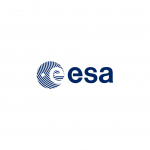insar.sk Limited Liability Company
insar.sk Limited liability company is a provider of geodetic and remote sensing analysis with focus on the deformation monitoring via satellite radar interferometry (InSAR, Interferometric Synthetic Aperture Radar). The primary aim of the company is the deformation monitoring of structures and infrastructures (buildings, industrial zones, cultural heritage structures, roads, bridges, highways), urban areas, undermined and landsliding areas, deposits of mineral resources and objects of the strategic importance (dams, waterworks, powerplants, airport facilities). The company focuses on the development of autonomous procedures designed to detect outlying measurements and facilitating the automatic interpretation of higher-order products such as ground deformation maps.
Why Choose Us?
Precision
Comparable to conventional in-situ techniques
Spatial Coverage
Can monitor hundreds of square kilometres simultaneously
Frequent updates
Guaranteed observation every couple of days
Low-cost merit
No need for in-situ observations employing remote sensing data
Improved emergency management
Thanks to better situational awareness
Worldwide availability
Our services do not know boundaries
Historical analysis (backdating availability)
Historical analysis starting from 2014
Fast & Efficient
Precise, Fast, Reliable & Very Cost Effective analysis
24/7 Assitance by Qualified Geodesy Experts
Dedicated team of experts and scientists
Years of experience
InSAR operations since 2008
TEAM
Our dedicated team of qualified geodesy experts

Matus Bakon (CEO)
„What I consider as the most progressive technology in geodesy? InSAR.”

Richard Czikhardt (CTO)
"InSAR is truly an answer to any of your deformation monitoring needs."

Juraj Papco (Co-Investigator)
"Structural health monitoring is not effective nowadays. Possibilities of InSAR technology are simply fascinating."

Martin Lesko (Technician)
" InSAR is a technology with a great potential and I want to be part of its further development."
OUR PARTNERS
Our projects are developed with the help of following partners:





